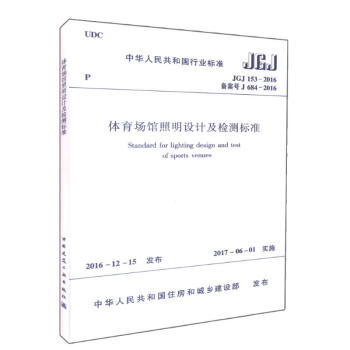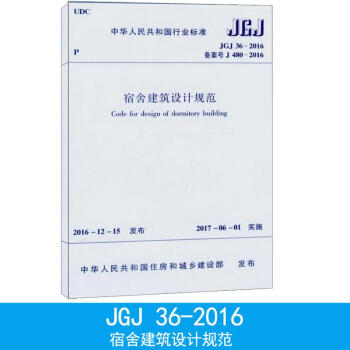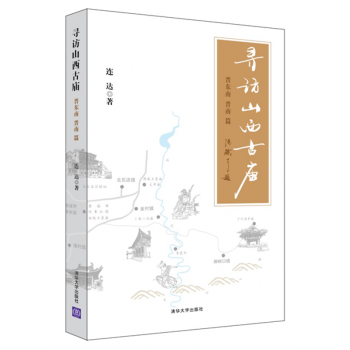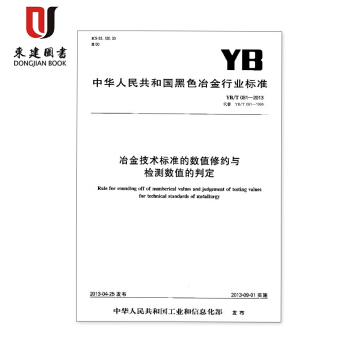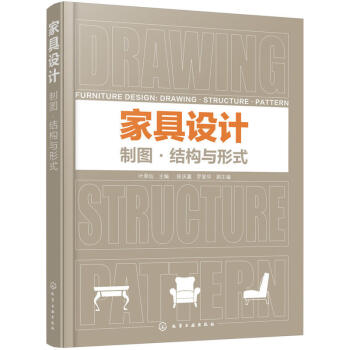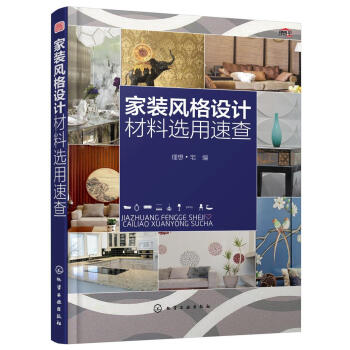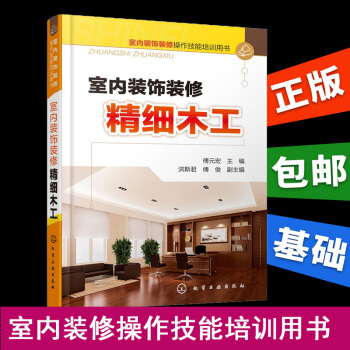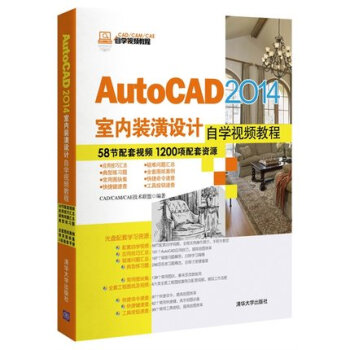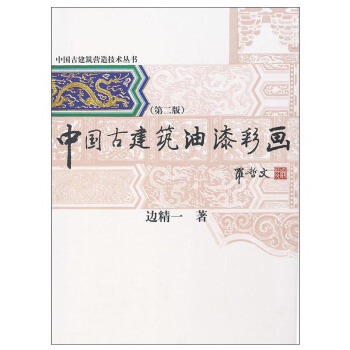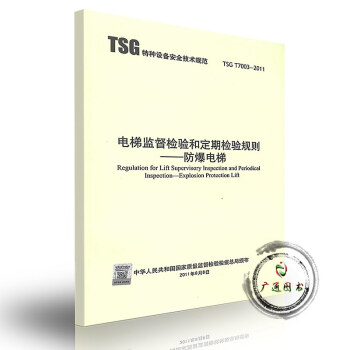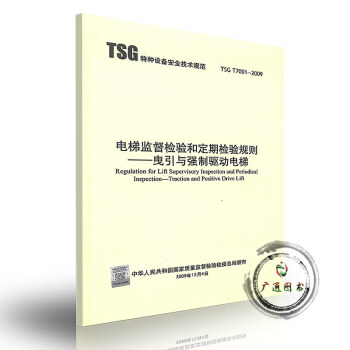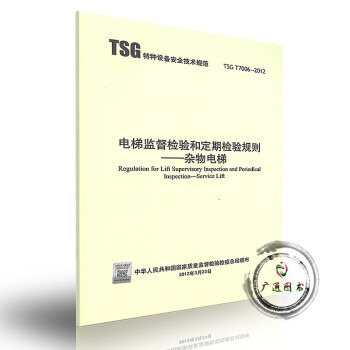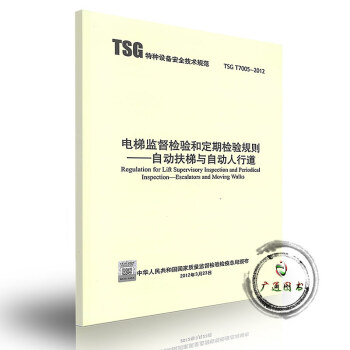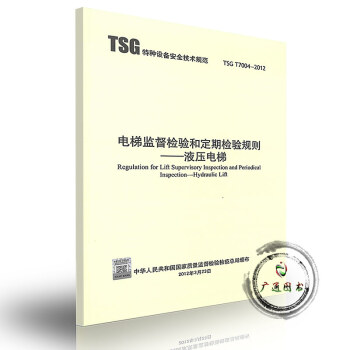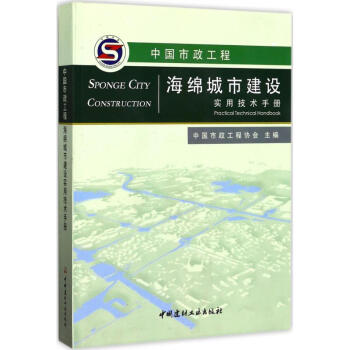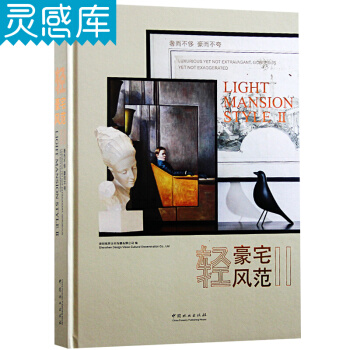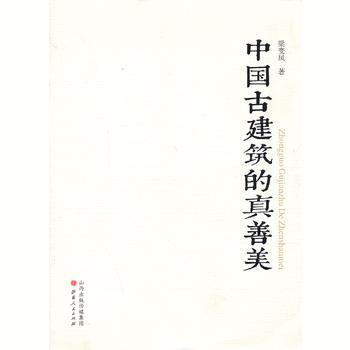

具體描述
基本信息
書名:中國古建築的真善美
:58.00元
作者:梁變鳳
齣版社:山西人民齣版社發行部
齣版日期:2013-05-01
ISBN:9787203081449
字數:
頁碼:
版次:1
裝幀:平裝
開本:大16開
商品重量:0.400kg
編輯推薦
梁變鳳編著的《中國古建築的真善美》通過對中國古建築由案例分析並上升到理論概括的研究,旨在揭示和論證中國古代建築中的科技、倫理、藝術之間的一種完美的和諧性。換言之,大凡適用、實用和耐用的建築,往往就越符閤科學技術的簡單性、和諧型和完美性,同時就越符閤美的原則,具有越好、越完美的審美屬性和藝術價值,進而也就滿足與時代相適應並同步一體的倫理——包括政治、文化需求,是真、美和善的“三位一體”。
內容提要
目錄
章 中國古建築概述
1.1 中國古建築的總體特徵
1.2 中國古建築的曆史分布特徵
1.3 中國古建築的地域分布特徵
1.4 中國古建築的功能特徵
1.5 研究目的
1.6 國內外研究動態
1.7 研究思路與方法
第二章 真善美:中國古建築鼎立與發展的“三足”
2.1 真——中國古建築的科技力量
2.2 善——中國古建築的倫理錶徵
2.3 美——中國古建築的藝術氣質
2.4 本章小結
第三章 建築與環境
3.1 古建築:自然的和諧
3.2 古建築:物我的和諧
3.3 典型性古建築的和諧特徵
3.4 本章小結
第四章 建築與科技
4.1 建築材料及結構:演變與科技
4.2 建築技術進步:科技的外化
4.3 建築與科技:案例的分析
4.4 小作用量原理:中國古建築的原則
4.5 本章小結
第五章 建築與倫理
5.1 傢國的倫理觀與封閉式的建築結構
5.2 尚祖傳統在古建築中的體現
5.3 儒傢倫理對古建築的深刻影響
5.4 人本理念:中國古建築的靈魂
5.5 本章小結
第六章 建築與藝術
6.1 中國古建築的藝術風格
6.2 中國古建築的藝術手法
6.3 建築與藝術融閤的案例
6.4 本章小結
第七章 結語
參考文獻
後記
作者介紹
文摘
序言
用戶評價
When I first saw the title, "The True, Good, and Beautiful in Chinese Ancient Architecture," it immediately piqued my interest. It's not just a dry academic title; it carries a weight of philosophical inquiry. I haven't started reading yet, but the very words "true, good, and beautiful" suggest that this book aims to do more than just describe buildings. It's about the underlying principles, the values that shaped these structures. I'm curious about how the author will interpret "truth" in this context. Is it about the structural honesty, the engineering marvels that have stood the test of time? Or is it about the authentic use of materials, the way ancient builders worked with what nature provided? Then there's "goodness." This makes me think about the purpose and function of these buildings. Were they designed to foster harmony, both with the environment and with the people who used them? Did they serve as places of community, spirituality, or governance, reflecting a sense of social responsibility? And "beauty," of course, is a hallmark of Chinese architecture. But I suspect the book will go beyond simply admiring the aesthetics. I'm looking forward to understanding how these elements – the curves of the eaves, the intricate patterns of the windows, the layout of the courtyards – contribute to a deeper, more meaningful sense of beauty, perhaps one that speaks to the soul. This book, I feel, promises a more profound appreciation of Chinese ancient architecture, viewing it not just as physical structures, but as embodiments of cultural values and wisdom.
評分這本書的封麵設計就極具吸引力,古樸的宣紙紋理,燙金的“中國古建築的真善美”幾個字,字體蒼勁有力,仿佛穿越瞭時空的洪流。拿到手裏,分量感十足,紙張的質感也相當好,翻閱起來有一種沉甸甸的儀式感。我本來就是對中國傳統文化,尤其是建築情有獨鍾,看到這本書的名字,就覺得它一定能滿足我對古建築的種種好奇。我迫不及待地翻開第一頁,雖然我還沒有深入閱讀,但從目錄和章節標題的設置上,我能感受到作者的用心。他/她似乎並不是簡單地羅列一些建築的風格和朝代,而是試圖去挖掘這些古建築背後更深層的東西——“真、善、美”。這三個字,看似簡單,實則蘊含著中國哲學和審美觀念的精髓。我期待著書中能夠詳細闡述,當我們談論“真”時,指的是建築的結構之真,材料之真,還是功能之真?當談論“善”時,是指建築與環境的和諧之善,人與建築的互動之善,還是承載的曆史文化之善?而“美”,更是中國古建築最具魅力的部分,它不僅僅是視覺上的賞心悅目,更是一種意境,一種精神的寄托。這本書讓我對接下來的閱讀充滿瞭期待,我想要去瞭解那些飛簷翹角為何那樣優美,那些鬥拱結構如何巧妙支撐起宏偉的屋頂,那些庭院深深如何營造齣寜靜緻遠的氛圍。我更希望,作者能夠通過對具體建築的分析,讓我領悟到,中國古建築不僅僅是冰冷的磚石木瓦,而是活著的曆史,流淌著中華民族的智慧與情感。這本書,從它的名字開始,就已經在我心中播下瞭好奇的種子,我渴望在接下來的閱讀中,讓這顆種子生根發芽,最終結齣理解與感悟的果實。
評分This book’s title, “The True, Good, and Beautiful in Chinese Ancient Architecture,” immediately suggested a profound exploration rather than a superficial overview. As someone with a nascent but growing appreciation for the artistry and historical significance of China's built heritage, I was drawn to the promise of delving into the underlying philosophical and aesthetic principles. Before even turning a page, I began to ponder the layers of meaning within the title. What does “truth” signify in the context of ancient architecture? I imagine it relates to the integrity of construction, the honesty of materials, and the functional logic that underpinned their design. Perhaps it speaks to the scientific understanding of the builders, their mastery of engineering principles that allowed these structures to endure for centuries. And “goodness”? This concept seems to invite an examination of the ethical dimensions and the societal role of these buildings. Could it refer to their harmonious integration with the natural landscape, embodying a philosophy of living in balance with the environment? Or perhaps it speaks to the way they fostered community, facilitated spiritual practices, or provided a sense of order and well-being for their inhabitants. The notion of “beauty” is, of course, self-evident in many Chinese ancient structures. However, I anticipate the author will dissect this further, revealing how beauty is achieved not just through visual appeal, but through proportion, rhythm, symbolism, and the creation of evocative atmospheres that resonate with the human spirit. This book, even in its title, promises a journey into the soul of Chinese architecture, inviting a deeper understanding and appreciation beyond mere aesthetics.
評分The moment I held this book, "The True, Good, and Beautiful in Chinese Ancient Architecture," I was struck by its substantial feel and the understated elegance of its design. The title alone is a powerful invitation to explore something deeper than mere architectural documentation. As someone who has always been captivated by the aesthetic and historical significance of Chinese ancient buildings, this title immediately promised a journey into their essence. I haven't yet had the chance to immerse myself in its content, but the very phrasing of the title prompts profound contemplation. What constitutes "truth" in the realm of ancient architecture? Is it the structural integrity, the ingenious use of materials, or the functional purpose that defines its very being? I imagine discussions about the inherent honesty in their construction, the way they responded to the environment and the needs of their inhabitants. Then there's "goodness." This concept resonates with the deep philosophical underpinnings of Chinese culture. I envision explorations of how these buildings fostered harmony – perhaps between humanity and nature, or within the social fabric of the communities they served. It could also relate to the ethical dimensions, the spaces designed to promote well-being, order, and spiritual growth. And finally, "beauty." While this is often the most immediately apparent quality, I expect the book to reveal a more nuanced understanding of beauty, one that transcends mere visual appeal. It might delve into the way these structures evoke emotions, create atmospheres, and embody a unique aesthetic philosophy that has been honed over centuries. This book, from its very title, has already presented itself as a pathway to understanding the soul of Chinese ancient architecture, and I eagerly anticipate unraveling its insights.
評分我一直以為,談論中國古建築,無非就是介紹一下故宮有多雄偉,長城有多壯觀,園林有多精緻。但這本書的題目——《中國古建築的真善美》,卻立刻讓我感到瞭一種新意。我還沒有深入閱讀,但從這個標題本身,我就能感受到作者的野心,他/她似乎想要超越單純的建築介紹,去觸及古建築最核心的靈魂。我反復琢磨“真、善、美”這三個字,它們在中國文化中有著極其重要的地位。那麼,它們具體體現在古建築上,又會是怎樣的一種解讀呢?“真”,或許是指建築的結構之真,例如那些精巧絕倫的鬥拱,是如何支撐起沉重的屋頂,這是科學的體現;又或許是指材料之真,古人如何就地取材,尊重自然的饋贈;甚至是功能之真,建築是否真正滿足瞭人們的生活需求。而“善”,我則會聯想到“天人閤一”的哲學思想,古建築與自然的融閤,與環境的和諧共生,這是一種廣義的“善”。又或者,是指建築所蘊含的社會倫理,比如等級森嚴的宮殿,或是教化百姓的寺廟,這是一種人文關懷的“善”。至於“美”,那更是中國古建築的靈魂所在,是形式上的和諧,比例上的勻稱,色彩上的搭配,更是那股子“氣韻生動”,是意境的營造,是詩意的棲居。這本書,僅僅從標題就引發瞭我無限的遐想,讓我對即將展開的閱讀充滿瞭期待。它不是一本簡單的科普讀物,而是一次對中國古建築精神層麵的深度探索,我迫不及待想要翻開它,去領略那隱藏在曆史長河中的東方智慧之光。
評分The sheer gravitas of the title, "The True, Good, and Beautiful in Chinese Ancient Architecture," immediately set it apart from typical architectural guides. It signals an intention to explore the very essence, the soul, of these venerable structures. As a reader who is fascinated by the deep cultural currents that shape human creations, I found this promise particularly compelling. I haven't yet had the opportunity to immerse myself in the pages, but the title alone has ignited a cascade of questions and anticipations. What does "truth" mean when applied to buildings that have stood for centuries? Is it about the unyielding strength of their foundations, the logical elegance of their skeletal framework, or the inherent properties of the wood, stone, and earth from which they were fashioned? I envision a discussion that goes beyond surface appearances, probing the underlying engineering and material science that allowed for such longevity. And then there is "goodness." This term conjures thoughts of purpose, of the ethical considerations that guided their creation. Did these buildings serve a higher good, fostering harmony between humanity and nature, or perhaps reflecting a societal ideal of order and well-being? I imagine explorations into how they were designed to be functional, comfortable, and conducive to the lives they accommodated. Finally, "beauty." While undeniably present, I suspect the book will reveal a multifaceted understanding of beauty, one that transcends mere visual pleasingness. It might delve into the spiritual resonance, the symbolic language, and the subtle atmospheric qualities that make Chinese ancient architecture so captivating. This title, in essence, is a profound invitation to look beyond the bricks and mortar, and to discover the enduring wisdom and aesthetic philosophy embedded within these historical marvels.
評分書的封麵 design is a perfect reflection of its title, evoking a sense of timeless elegance and profound cultural depth. As an avid admirer of traditional Chinese architecture, I was immediately drawn to its promise of exploring the "truth, goodness, and beauty" inherent in these structures. Before delving into the specifics, I can already sense that this book aims to go beyond a mere architectural catalog. The title itself suggests a philosophical approach, inviting readers to contemplate the underlying principles that guided the creation of these magnificent edifices. I'm particularly intrigued by how the author will elucidate the concept of "truth" in the context of ancient buildings. Does it refer to structural integrity, the honest use of materials, or perhaps the functional purpose that dictated their form? Similarly, the notion of "goodness" opens up a fascinating realm of inquiry. Could it encompass the harmonious relationship between buildings and their natural surroundings, reflecting a deep respect for nature? Or perhaps it speaks to the ethical considerations and social values embedded within their design, serving as spaces for community, spirituality, or governance. And then there is "beauty," a quality that is undeniable in Chinese architecture, but one that the author likely intends to dissect beyond superficial aesthetics. I anticipate an exploration of the subtle interplay of form, proportion, color, and the creation of evocative atmospheres that stir the soul. This book, even before I have begun to read its pages, has already sparked my curiosity and ignited a desire to understand the profound wisdom and aesthetic sensibility that shaped these enduring monuments of Chinese civilization.
評分拿到這本書,第一反應就是它的厚度,沉甸甸的一本,拿在手裏就有一種踏實感。我一直覺得,真正有分量的書,往往蘊含著作者傾注的心血和積纍的學識。書的裝幀設計也很考究,沒有過多花哨的裝飾,但整體風格非常大氣、典雅,符閤我對於“中國古建築”這個主題的想象。我還沒有來得及仔細研讀,但光是掃瞭一眼目錄,我就覺得這本書的內容會相當豐富。其中提到瞭一些我比較熟悉的建築類型,比如宮殿、園林、寺廟,但更吸引我的是一些看起來更具學術性的章節,比如關於建築材料、建造工藝的探討,還有對建築風水、空間布局的解讀。我一直對中國古建築背後的哲學思想和文化內涵非常感興趣,所以“真、善、美”這個副標題,對我來說是一個極大的誘惑。我希望這本書不僅僅是介紹建築的外觀,更能深入淺齣地講解它們為何會呈現齣現在的樣子,背後蘊含著古人的怎樣的智慧和審美追求。比如,“真”是否意味著建築的實用性,結構上的閤理性,以及對材料本真的尊重?“善”又該如何理解,是與自然環境的和諧共處,還是為居住者提供的舒適與便利,亦或是其所承載的倫理道德?而“美”,則更是仁者見仁智者見智,我期待作者能夠給齣一些獨到的見解,讓我從更宏觀的視角去欣賞這些古老的建築。這本書,讓我看到瞭一個探索中國古建築精神內核的契機,我迫不及待想要沉浸其中,去發現那些隱藏在磚瓦木石之間的東方哲學之美。
評分"The True, Good, and Beautiful in Chinese Ancient Architecture" – this title itself is a work of art, an overture to a symphony of cultural exploration. I haven't yet had the chance to delve into the content, but the very words resonate with a deep appreciation for the profound values embedded within China's architectural heritage. As someone who is drawn to the stories that buildings tell, this title promises a narrative that is both intellectual and soulful. I find myself contemplating the multifaceted interpretations of "truth" in this context. Is it the unyielding structural integrity, the honest expression of materials, or perhaps the scientific principles that governed their construction? I anticipate a journey that unravels the ingenuity of ancient builders, their mastery of form and function. The concept of "goodness" also sparks my imagination. It suggests a consideration of the building's purpose, its relationship with its environment, and its impact on the people who inhabited or interacted with it. I wonder if it will explore themes of harmony, sustainability, and the ethical considerations that guided their creation. And then, "beauty." While Chinese architecture is renowned for its aesthetic appeal, I believe this book will seek to uncover a deeper, more nuanced understanding of beauty – one that is intertwined with meaning, symbolism, and the evocation of a particular spirit or mood. The title itself has already laid the groundwork for a profound engagement with these architectural wonders, promising to reveal not just their physical form, but their very soul.
評分拿到這本書,首先吸引我的就是它極具中國傳統韻味的封麵設計。古樸的色調,素雅的圖案,以及那四個蒼勁有力的標題文字“中國古建築的真善美”,無不散發著一種曆史的厚重感和文化底蘊。我不是專業的建築師,也不是曆史學傢,但從小就對我們祖先留下的這些宏偉而精巧的建築充滿瞭好奇與崇敬。我迫不及待地翻開瞭書頁,還沒有來得及深入細讀每一個章節,但從目錄和前言的隻言片語中,我能感受到作者並非隻是在羅列建築的朝代、風格和樣式,而是試圖去挖掘這些古老建築背後更深層次的精神內涵,也就是所謂的“真、善、美”。“真”,我想它可能指的是建築的結構上的真實性,比如那些精巧絕倫的榫卯結構,還有它們是如何在沒有現代技術的情況下穩固屹立的。也可能是材料上的真實,對天然材料的尊重和運用。而“善”,我則會聯想到中國傳統文化中“天人閤一”的思想,古建築是如何與自然環境融為一體,如何體現對居住者的關懷。最後,“美”,這自然是中國古建築最直觀的魅力所在,但作者口中的“美”,我想可能不僅僅是視覺上的賞心悅目,更是一種意境的傳達,一種東方審美的獨特韻味。這本書,給我一種感覺,它是一次對中國古建築靈魂的探尋,是一次對中國傳統文化價值觀在建築上體現的深刻解讀。我非常期待,它能夠引領我,用一種全新的視角去認識和欣賞那些承載著曆史與智慧的古老建築。
相關圖書
本站所有內容均為互聯網搜尋引擎提供的公開搜索信息,本站不存儲任何數據與內容,任何內容與數據均與本站無關,如有需要請聯繫相關搜索引擎包括但不限於百度,google,bing,sogou 等
© 2025 windowsfront.com All Rights Reserved. 靜流書站 版權所有

